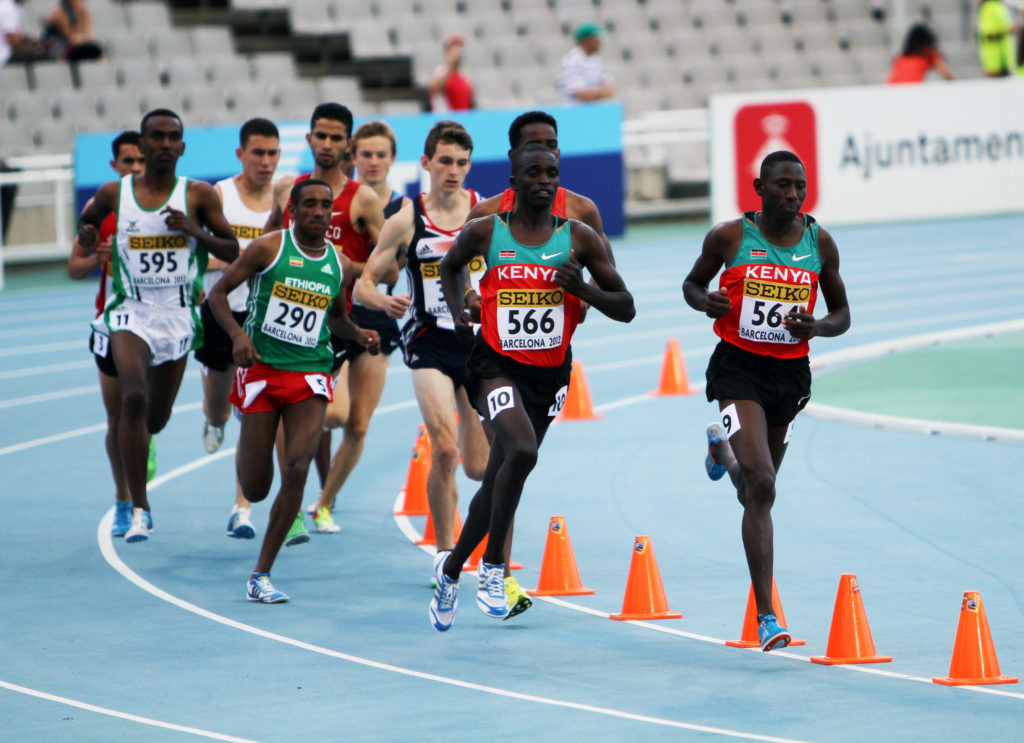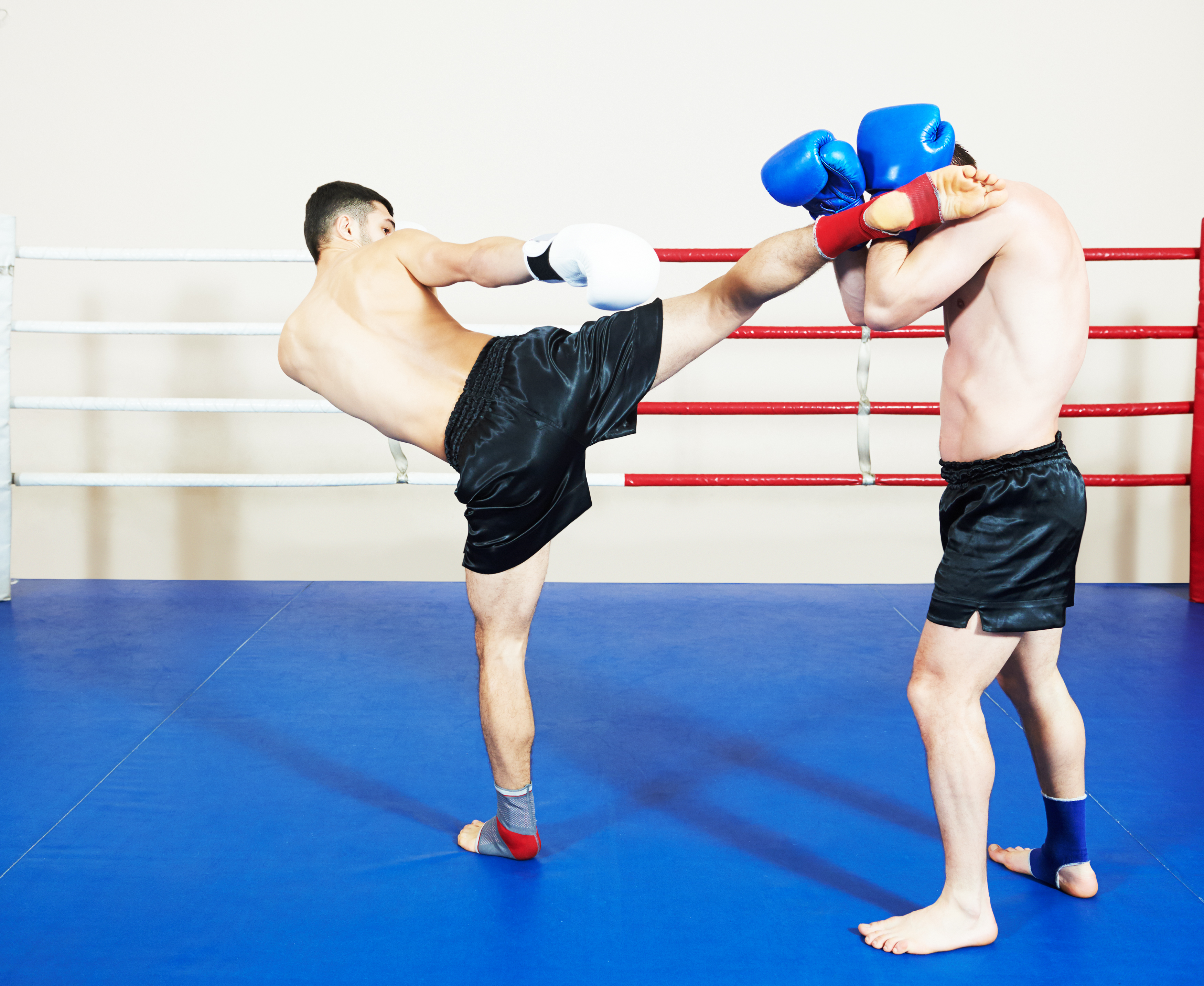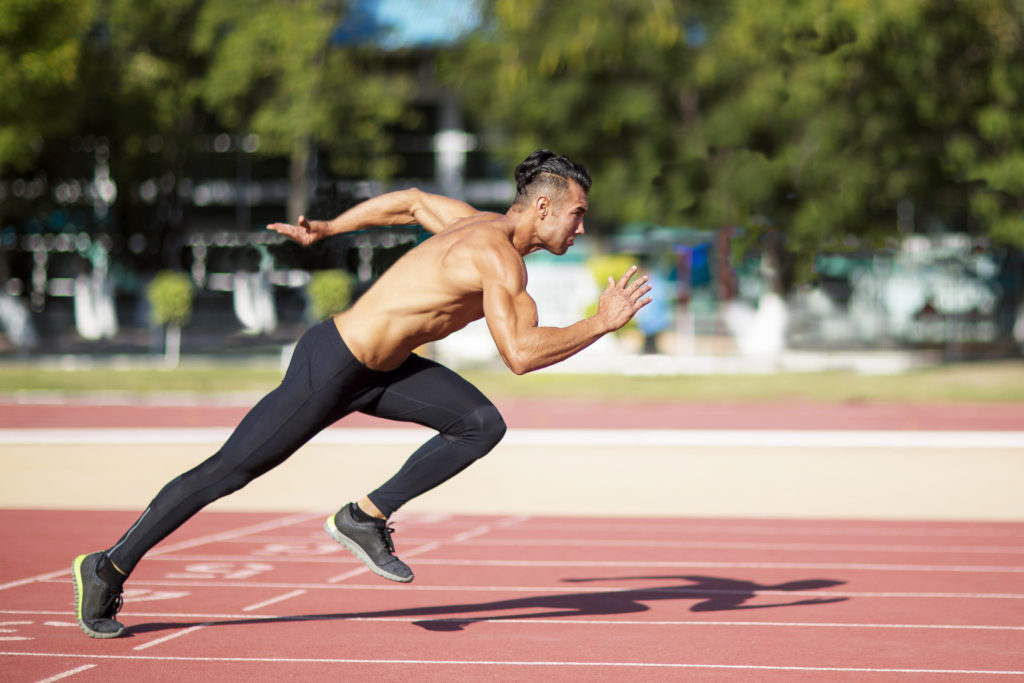In this post we discuss how to develop a high level of muay thai cardio and how to never get tired again when it comes to your muay thai training, sparring or competition.
We look at current training methods to develop cardio for muay thai in traditional thai gyms and how to improve on it through understanding energy systems in the body.
And through this post you will be able to develop your own routine for high level cardio for muay thai and to ensure you never get tired again!
This post will give you a full 12 week periodized muay thai cardio routine that you can follow to never gas out again!

At the end of the day you want to implement a conditioning routine specifically to improve your muay thai performance while also ensuring you are giving your best in each muay thai training session.
This requires understanding and developing three different energy systems required for combat sports (don’t worry they are all broken down in simple language in this post).
But first off let’s take a look at current methods of developing cardio for muay thai commonly found in muay thai gyms in Thailand and across the world.
How much cardio do muay thai fighters do?
Cardio is a major part of muay thai training.
Having strength and excellent technique as well as the best strategy can only take you so far in a fight.
If you do not have the ‘gas tank’ or endurance to keep you breathing under control you will not to be able to utilise all your muay thai weapons and physical attributes effectively in a fight.
You could say that cardio is a part of almost every aspect of muay thai training.
Whether hitting thai pads, working the bag or sparring, you will develop your cardio.
But pure cardio training is a must in muay thai and this is also a major component of muay thai training.
Running – Twice per day
Most muay thai gyms require running before training, twice a day – no questions asked!
“No running, no muay thai” is a common saying among trainers across Thailand.
Typical gyms in Thailand require running (the pace doesn’t have to be fast):
- 5-10km before morning training
- 3-7km before afternoon training
And this is repeated 6 days per week without fail.
Skipping – 3-5 Rounds twice per day
Following running and stretching a bit, skipping is the next part of cardio for muay thai training.
Skipping develops cardio but also calf and foot strength and balance, footwork and strength in the wrists and forearms.
Skipping is another indispensable part of cardio for muay thai training.
And skipping is done usually after running for 3-5 rounds twice per day.
I would count the above two parts of muay thai training as having the most cardio specific focus especially in terms of aerobic capacity development.
Shadow boxing, thai pads, heavy bag and sparring all also develop muay thai cardio but they also have a very large focus on skill and technique development also.
While running and skipping rope really have no muay thai skill or technique development.
So in terms of pure cardio for muay thai training it would be fairly accurate to say:
Running between 3-10km and skipping for 3-5 rounds twice per day is standard cardio focussed training in muay thai.
This type of cardio is focussed on aerobic capacity development which is one of the three energy systems needed for endless muay thai cardio.
It is also one of the most important of the three energy systems as it refuels the other two energy systems and needs to be developed as a base energy system.
Understanding Energy Systems
Muay thai is essentially a sport of bursts of high intensity energy output and full body movements that require flexibility and agility as well as endurance to be able to execute over the course of a 3-5 round fight.
As such the three energy systems are utilized throughout a muay thai fight and developing each of these energy systems are important aspects of muay thai conditioning.
So what are the three energy systems and how do we develop them?
1. Aerobic
The aerobic system provides the foundation for your muay thai conditioning and is basically the system that is most developed in your steady-state longer cardio sessions such as running, cycling and swimming.
Aerobic basically mean “with oxygen”.
The aerobic system is the system most used in a long distance running event.

The aerobic system is trained through what boxers refer to as ‘roadwork and running in Thailand is an absolutely essential aspect of muay thai that cannot be neglected.
As they say in Thailand, “no running, no fight”.
The aerobic system will be the foundation for your cardio and fight endurance. The aerobic system also is important as it refuels and regenerates the other 2 energy systems when they have been exhausted.
2. Anaerobic Lactic
As energy output intensity increases, it becomes more difficult for the body to provide oxygen to fuel the aerobic pathways. This is when the anaerobic system becomes engaged.
Anaerobic basically means “without oxygen”.
In terms of the anaerobic lactic energy system, this refers to being “without oxygen, with lactic acid”.
The anaerobic lactic system is highly engaged in an event such as the 400m hurdles.
You can see at the very end of the race the pace of the runners slows right down as muscle fatigue sets in.

Glucose from your body’s blood and muscle glycogen is used with ATP (energy) as well as lactic acid produced as a byproduct. With increasing intensity more lactic acid is produced in and accumulated in the blood and muscles.
At maximum exertion, the anaerobic lactic system is depleted within 60 to 120 seconds and the athlete will have a burning sensation in the muscles due to lactic acid build up as well as muscle fatigue and heavier breathing.
3. Anaerobic Alactic
Sudden, explosive movements are fuelled by the anaerobic alactic system which produces ATP at the fastest rate of the 3 energy systems.
Anaerobic alactic means “without oxygen, without lactic acid”.
The anaerobic alactic system is fuelled by ATP and creatine phosphate which is a high energy substance. However as these energy sources are not very large in storage, they are exhausted within about 10 seconds of exertion.
The 100m sprint is a great example of utilisation of the anaerobic alactic system.

This system can be replenished within a few minutes of rest.
Periodized Training for the Best Results
Know that we understand that muay thai utilizes all three of the body’s energy systems we now can develop these systems through a structured training program.
However as in life, muay thai is the same you really cant do everything at the same time.
This means you need to plan and periodize your training.
So you be able to efficiently and effectively develop all aspects including muay thai skill training, sparring, strength development, mobility and recovery as well as cardio conditioning (the focus of this post).
Even with the cardio conditioning in and of itself all three energy systems need to be approached and developed with a specific focus in order to be more efficient and to develop that endless cardio for muay thai.
Perodization is the key!
Dividing up your training into 4 week periods that focus on each of the three energy systems is the way to develop your cardio conditioning for muay thai.
Three phases will be used that correspond to the three energy systems,
Phase 1 -Cardio Foundation/Aerobic capacity
Longer, steady state aerobic training will be the foundation of your cardio conditioning for muay that and will be the focus of Phase 1 cardio training.
Here we seek to build up your aerobic capacity.
This aerobic capacity will be drawn upon throughout the rest of your cardio conditioning.
In Phase 1 you will use the standard roadwork program structure and look to commit 3-5 sessions per week of a minimum of 30 minutes of aerobic activity (max of 45mins) at 60-70% of your maximum heart rate held at a steady pace.
Its up to you to find time to plug in these aerobic sessions but a minimum of 3 per week is required of at least 30 minutes.

I would recommend jogging with a heart rate monitor or you can always check your heart rate yourself by checking your pulse and ensuring you don’t go over your heart rate, or you will begin engaging the anaerobic system.
If you can only commit to 3 sessions per week outside of you regular muay thai training (5-6 sessions per week) and strength sessions (3 sessions per week) in the gym this should set you up nicely as you will also be developing the aerobic system in your normal muay thai session as well.
But committing time to specifically develop the aerobic system is the key to starting to develop a well conditioned cardio system.
- Week 1 – 3-5 sessions of 30 mins
- Week 2 – 3-5 sessions of 35 mins
- Week 3 – 3-5 sessions of 40 mins
- Week 4 – 3-5 sessions 35 mins
Phase 2 – Anaerobic Lactic – Threshold Training
A 2017 study from the International Journal of Performance Analysis in sport that looked specifically at 20 muay thai fighters found, “that during Muay Thai the lactic anaerobic system is widely recruited”.
3 sessions per week is recommended with each session lasting less than 20 minutes.
With a good aerobic base developed as your foundation, you can start to develop more of your anaerobic conditioning and increase the threshold at which your body reverts to the anaerobic lactic system.
This system is important to develop so when you feel this type of lactic build up and muscle burn in the fight you will not panic and you will know when to pick your battles, or the exchanges in the fight and when to back off and recover.
The point of this training is to push up or increase your lactic threshold so that your body will take longer to reach this point of lactic acid production and the resulting muscle fatigue.

Recovery from these sessions will take longer so it’s important to plan your training time well and have at least 24 hours rest before training this system again.
Keeping in mind that the anaerobic system lasts between 60 to 120 seconds we can use timed intervals to develop this system and to be able to take longer to reach this threshold and maintain exertion when we do reach this threshold.
Developing this system requires utilizing exercises that can be maintained for at least one minute and up to 2 minutes with recovery in between before hitting it again.
Hill runs are a great method for developing this system though you would need a relatively long hill with a gradual incline.
The stationary bike also is great for this type of training but I would recommend the elliptical machine which engages both your legs and arms and is easier to get your heart rate up than using your legs alone.
- Week 1 – 45 seconds exertion* 90 secs easy tempo by 6
- Week 2 – 1 min exertion 90 secs easy tempo by 6
- Week 3 – 1.5 minutes exertion 1 minute easy temp by 5
- Week 4 – 1 minute exertion 90 secs easy tempo by 6
*75-85% of your max heart rate is the level of exertion you should be reaching in these intervals and muscle fatigue should be felt due to lactic acid build up.
Phase 3 – Short Explosive Bursts of Power
The anaerobic alactic system is used in those short high intensity explosive bursts of energy such as in a throwing a power combination.
This system is refuelled by your aerobic system so the aerobic foundation you develop earlier on will actually improve your ability to utilize the anaerobic alactic system throughout a fight.
Each exercise should be performed for about 10 secs with explosive full power explosion into the movements.
3 session per week is recommended with each session lasting about 20 minutes. This may not seem like much but in addition to your muay thai training (5 times per week) and strength and power (2-3 gym sessions per week) this efficient focused cardio session will go a long way to improving your muay thai conditioning while also keeping you fresh and healthy.

Hill sprints or flat sprints are great for this Phase. I prefer sprints to the Elliptical machine as you can develop that powerful take off and quick and explosive engagement of your body’s muscles when you launch into your sprint.
It's important to note that you may feel well recovered before beginning the next rep of sprints but be sure to make use of all of the rest time so you don't begin to engage the lactic system.
- Week 1 – 10 sec sprints with explosive take off from start (2 minute rest between reps) 8 reps
- Week 2 – 10 sec sprints with explosive take off from start (1.5 minute rest) 10 reps
- Week 3 – 10 sec sprints with explosive take off from start (1.5 minute rest) 12 reps
- Week 4 – 10 sec sprints with explosive take off from start (1 minute rest) 10 reps
Muay Thai Cardio Conditioning Program
So we have discussed the 3 energy systems that are required for complete muay thai cardio conditioning.
Also we have looked at how to periodize your cardio conditioning so that you can efficiently develop your cardio without having to sacrifice your muay thai training as well as strength and power sessions in the gym.
Putting it all together the full periodized program is tabled below:
| Phase | Day 1 | Day 2 | Day 3 |
| Phase 1 Week 1 (3-5 days) | 30mins | 30mins | 30mins |
| Phase 1 Week 2 (3-5 days) | 35 mins | 35 mins | 35 mins |
| Phase 1 Week 3 (3-5 days) | 40 mins | 40 mins | 40 mins |
| Phase 1 Week 4 (3-5 days) | 35 mins | 35 mins | 35 mins |
| Phase 2 Week 1 | 45 secs hard 90 secs easy 6 reps | 45 secs hard 90 secs easy 6 reps | 45 secs hard 90 secs easy 6 reps |
| Phase 2 Week 2 | 60 secs hard 90 secs easy 6 reps | 60 secs hard 90 secs easy 6 reps | 60 secs hard 90 secs easy 6 reps |
| Phase 2 Week 3 | 90 secs hard 60 secs easy 5 reps | 90 secs hard 60 secs easy 5 reps | 90 secs hard 60 secs easy 5 reps |
| Phase 2 Week 4 | 90 secs hard 60 secs easy 6 reps | 90 secs hard 60 secs easy 6 reps | 90 secs hard 60 secs easy 6 reps |
| Phase 3 Week 1 | 8 sprints 2 min rest | 8 sprints 2 min rest | 8 sprints 2 min rest |
| Phase 3 Week 2 | 10 sprints 1.5 min rest | 10 sprints 1.5 min rest | 10 sprints 1.5 min rest |
| Phase 3 Week 3 | 12 sprints 1.5 min rest | 12 sprints 1.5 min rest | 12 sprints 1.5 min rest |
| Phase 3 Week 4 | 10 sprints 1 min rest | 10 sprints 1 min rest | 10 sprints 1 min rest |
References
- Ivo Cappai, Emanuela Pierantozzi, Enrico Tam, Filippo Tocco, Luca Angius, Raffaele Milia, Salvatore Squatrito, Alberto Concu & Antonio Crisafulli (2012) Physiological responses and match analysis of Muay Thai fighting, International Journal of Performance Analysis in Sport, 12:3, 507-516, DOI: 10.1080/24748668.2012.11868615
- Eric Wong, Ultimate MMA Strength & Conditioning Manual
- Don Heatrick, https://heatrick.com/category/mt-cardio/
- https://strengthmatters.com/the-anaerobic-lactic-energy-system-a-beginners-guide-2019-edition/




There’s certainly a lot to know about this subject.
I really like all the points you’ve made.
Hi would you mind letting me know which web host you’re using?
I’ve loaded your blog in 3 different browsers and I must say
this blog loads a lot faster then most. Can you suggest a good internet hosting provider at a reasonable price?
Thanks a lot, I appreciate it!
Hey I know this is off topic but I was wondering if
you knew of any widgets I could add to my blog that automatically tweet my newest twitter updates.
I’ve been looking for a plug-in like this for quite some time
and was hoping maybe you would have some experience with something
like this. Please let me know if you run into anything. I
truly enjoy reading your blog and I look forward to your new updates.